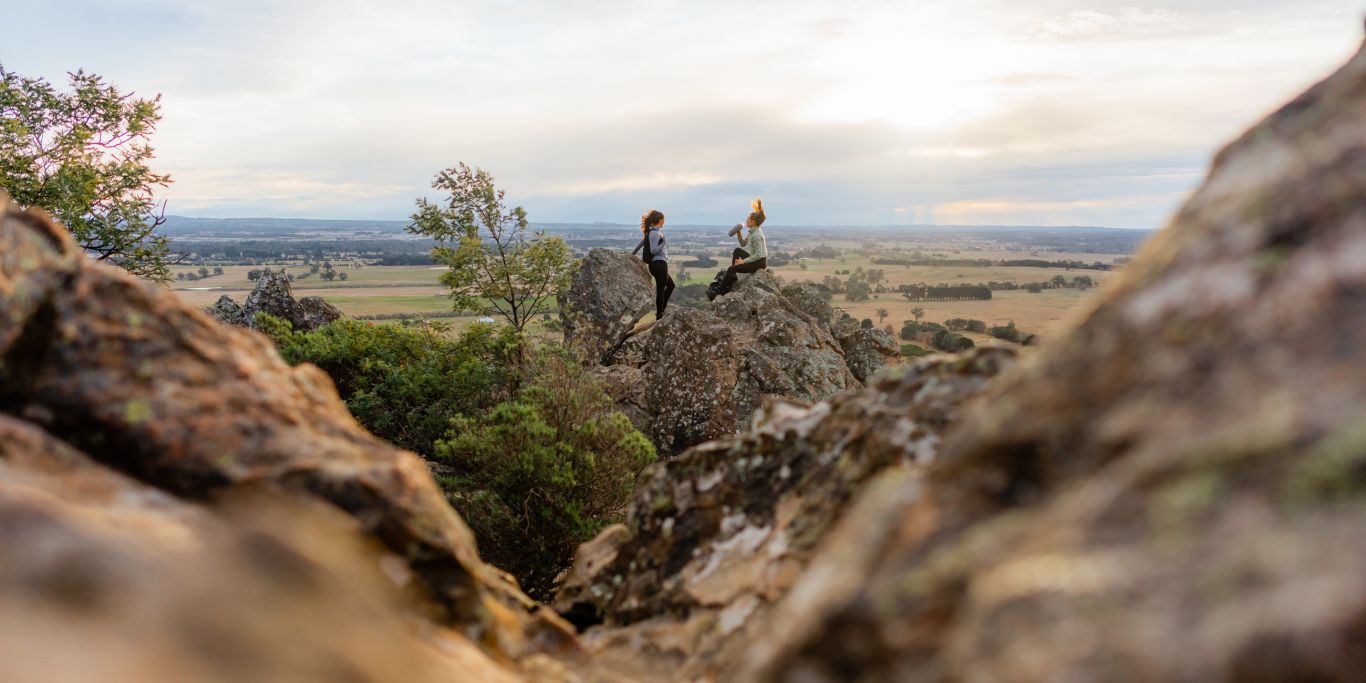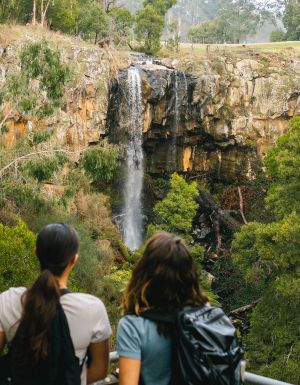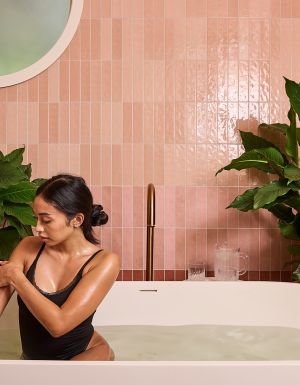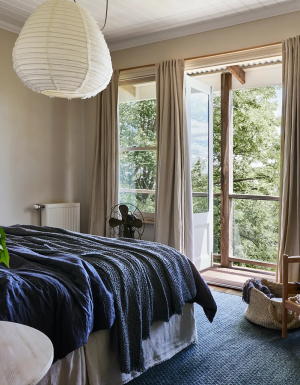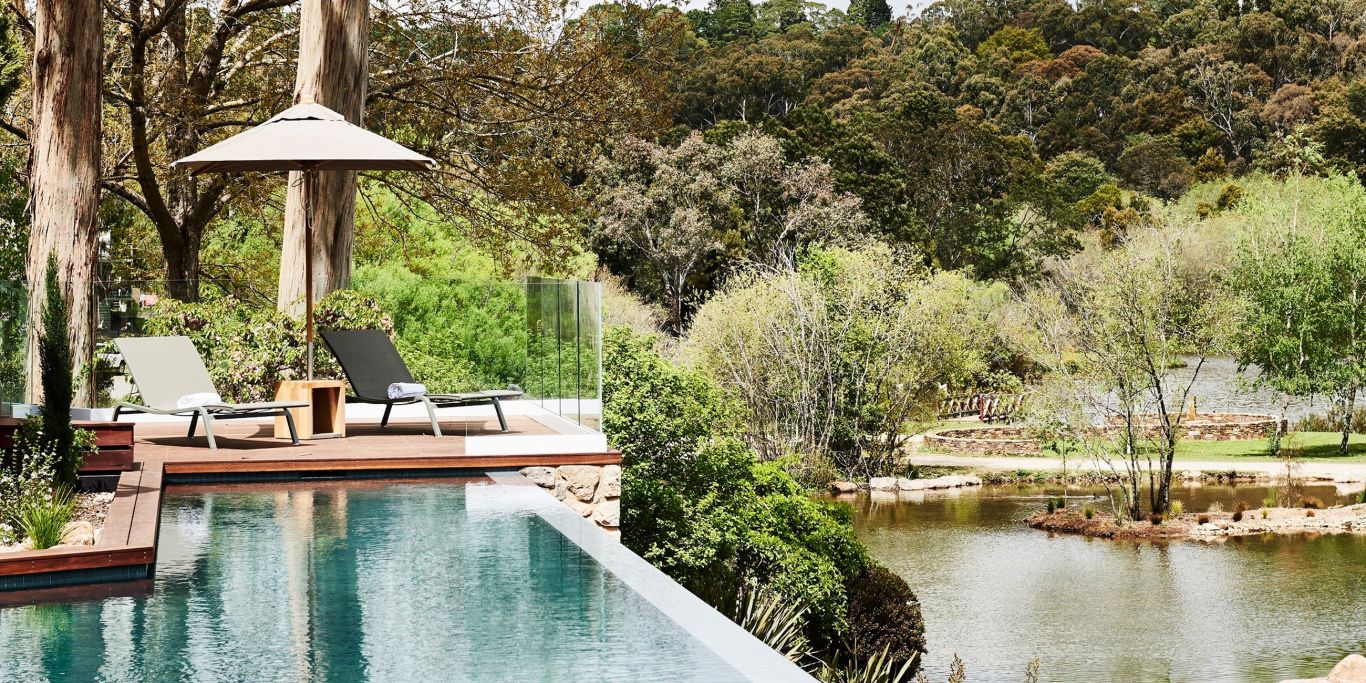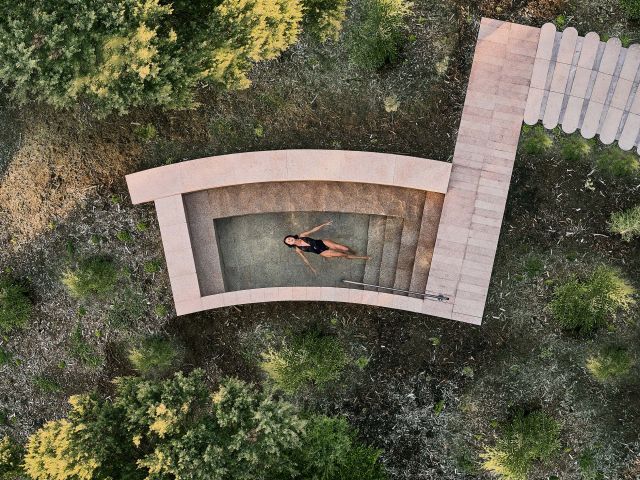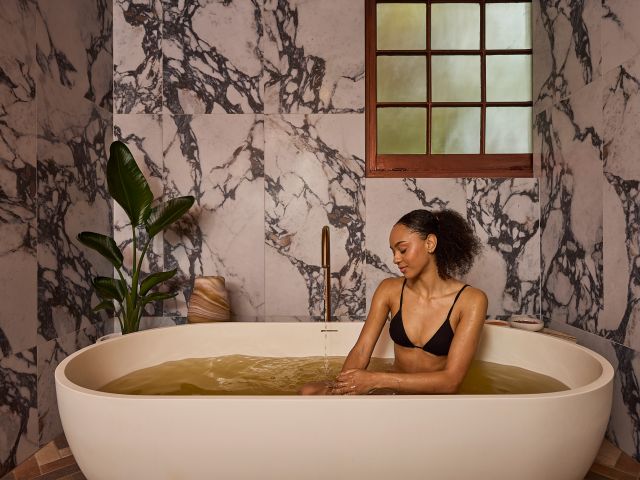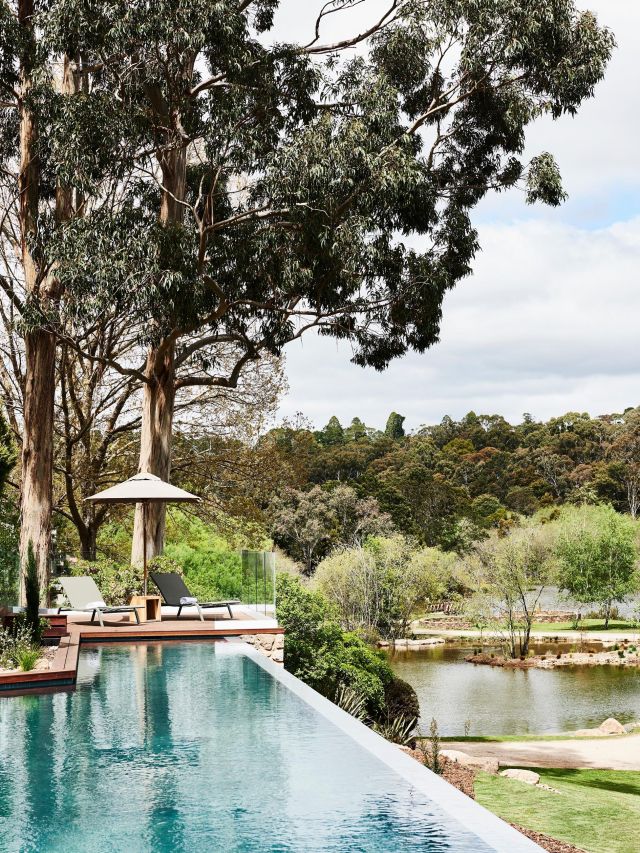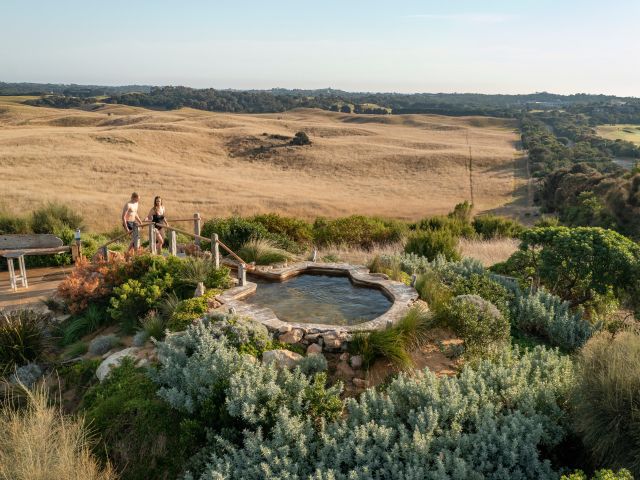Is the film/book Picnic at Hanging Rock real or imagined? Australian Traveller’s rock hound, Kerry van der Jagt, steps back in time to investigate this and other geological questions about the Macedon Ranges enigma.
Short answer: A picnic spot in Victoria where schoolgirls disappeared.
Long answer: Hanging Rock is located around 80km to the north of Melbourne in the Hesket Plains near Mt Macedon. It’s 718m above sea level and 105m above the surrounding plain. It’s also one of the best examples in the world of a volcanic feature known as a mamelon (French for nipple).
It was formed six million years ago (in the Tertiary period) when a stiff type of lava formed a rounded pile of layers on the surface as it was squeezed through a narrow vent in the Earth’s surface.
The type of lava is unique in that it has an extremely high soda content. Over the years the action of rainwater has formed an unusual rock known as solvsbergite (soda trachyte).
The same rock type is also found at the nearby Camel’s Hump at Mt Macedon. The mamelon has been exposed to weathering, which has resulted in the rock formation that can be seen today. These include: Stonehenge, McDonald’s Lookout and The Eagle.

Is Picnic at Hanging Rock real or imagined?
Hanging Rock is best known from Joan Lindsay’s narrative, Picnic at Hanging Rock (1967), about the mysterious disappearance of a group of local schoolgirls during an excursion to the Rock on February 14, Valentines Day 1900. And like any decent Australian mystery, the bodies were never found!
The author, in the opening to the first edition, states: “Whether Picnic at Hanging Rock is fact or fiction my readers must decide for themselves." At the time of the incident, organised searches for the three students and their teacher were carried out but only one girl was ever found.
Clearly she’s leaving the mystery open. My take is that the schoolgirls (and Miss McCraw) were crushed under a slab of rock that fell during a mini landslide, or they fell down a deep crevice or chimney. Either way, Hanging Rock is an eerie place and an extraordinary geological formation.
Today it remains a mystery shrouded in tales that flick between folklore and fact. The novel was eventually made into a movie directed by Peter Weir in 1975 and received international acclaim. A new adaption of Lindsay’s novel was turned into a six-part television series, starring Natalie Dormer aired in 2018.

Fast facts about Hanging Rock
You probably know: Annual events such as art exhibitions, movie nights under the stars, car shows, concerts, craft markets and family-friendly festivals are held at Hanging Rock.
But did you know: The type of rock, solvsbergite, is extremely unusual and, outside of the Macedon region, is only found in Norway and Sweden.
And did you also know: During filming of Picnic at Hanging Rock, watches and clocks of the cast and crew behaved badly. Some stopped, others ran fast, some slow. In Joan Lindsay’s novel, the watches of the schoolgirls stopped at noon (cue Twilight Zone music).
What else can you do at Hanging Rock Reserve?
Many folks take the relaxed route and set up for the day at one of the many BBQs (they’re free to use) scattered throughout the scenic reserve and simply admire the views of the soaring monoliths. The famous Pinnacle Walk to the summit is a popular activity as is the nocturnal ranger-guided walking tour.

There are three dedicated walks to enjoy at Hanging Rock: The Pinnacle Trail, Base Walking Trail and the Creek Walking Trail. Each trail showcases the reserve’s distinctive beauty; expect to see granitic boulders, curious mammals, and unique volcanic rock formations. The Pinnacle Trail to the summit is quite the highlight! Note: the pathways are quite wide and people of average fitness will reach the top relatively easily in about an hour.

The ranger-guided Hanging Rock night walking tour offers the opportunity to see gliders, koalas, wallabies and more exploring their natural surroundings. So, if adventuring after dark is your thing, this tailored tour will surely appeal.
This article was originally written by Kerry van der Jagt and updated by Roxanne Williams.

